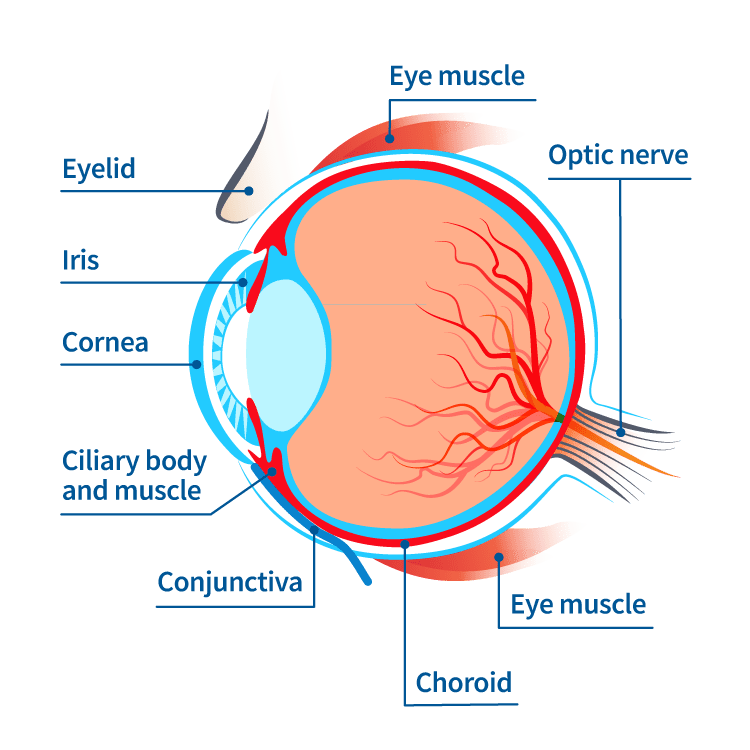What is eye inflammation?
Eye inflammation occurs in response to infection, allergies, autoimmune disorders, irritation, injury, or trauma to the eyes, eyelids, or surrounding tissues. Different parts of the eye can be affected, depending on the cause of the inflammation. Eye inflammation is common and can happen at any age. The length of time of the eye inflammation and treatment will depend on the type and severity of the underlying disease, disorder or condition. Most cases of eye inflammation can be successfully treated. However, in rare cases there can be a serious disease present, which is a threat to the eyesight. Early diagnosis is very important. If you have any of the signs or symptoms of inflammation of the eye, visit your doctor or an eye specialist as soon as possible.
What is inflammation?
Inflammation is your body’s response to injury, infection, or irritation. Inflammation can sometimes occur in response to normally harmless substances, such as dust, grass, or pollen. This is called an allergic reaction. The immune system may also mistakenly trigger inflammation in response to the body. This is called an autoimmune reaction.
“Inflammatory eye disease” includes a range of conditions associated with eye inflammation.

What are different types of inflammatory eye diseases?
Uveitis [u-vee-i-tis] is a term for inflammation of the eye. It can occur in one eye or both eyes and affects the layer of the eye called the uvea [u-vee-uh]. It also can be associated with inflammation of other parts of the eye and last for a short (acute) or a long (chronic) time. Uveitis can be serious and lead to permanent vision loss.
Keratitis
Keratitis [keh·ruh·tai·tuhs], also known as “corneal ulcer”, is an inflammation of the cornea – the clear, dome shaped window located at the front of the eye that covers the iris and pupil. Keratitis resulting from infections (called infectious keratitis) can be caused by bacteria, viruses, fungi, and parasites.
Find out more about keratitis.
Conjunctivitis
Conjunctivitis [kuhn·juhngk·tuh·vai·tuhs], or pink eye, is an inflammation of the conjunctiva, the clear mucous membrane that covers the white part of the eyeball and the inside of the eyelid. It is the most common eye infection in the United States.
Find out more about conjunctivitis.
Thyroid eye disease (TED), sometimes called Graves’ ophthalmopathy or Graves’ Eye Disease, is an autoimmune disease in which the immune system causes inflammation and swelling and stimulates the production of muscle tissue and fat behind the eye. The overactive thyroid gland (hyperthyroidism) is usually caused by Graves’ disease.
Find out more about thyroid eye disease.
What should I do if I think I have an inflammatory eye disease?
Diagnosis and treatment of inflammatory eye diseases are important. They can cause permanent damage to the eyes and vision loss that cannot be reversed. If you notice any of the signs or symptoms of inflammatory eye disease, make an appointment to see your eye doctor right away for a complete eye exam. At a complete eye exam, the eye care professional will do a thorough examination of the eyes.
Resources for Eye Care
Prevent Blindness has a list of financial assistance resources for those in need of support in meeting their eye health needs and medications.

